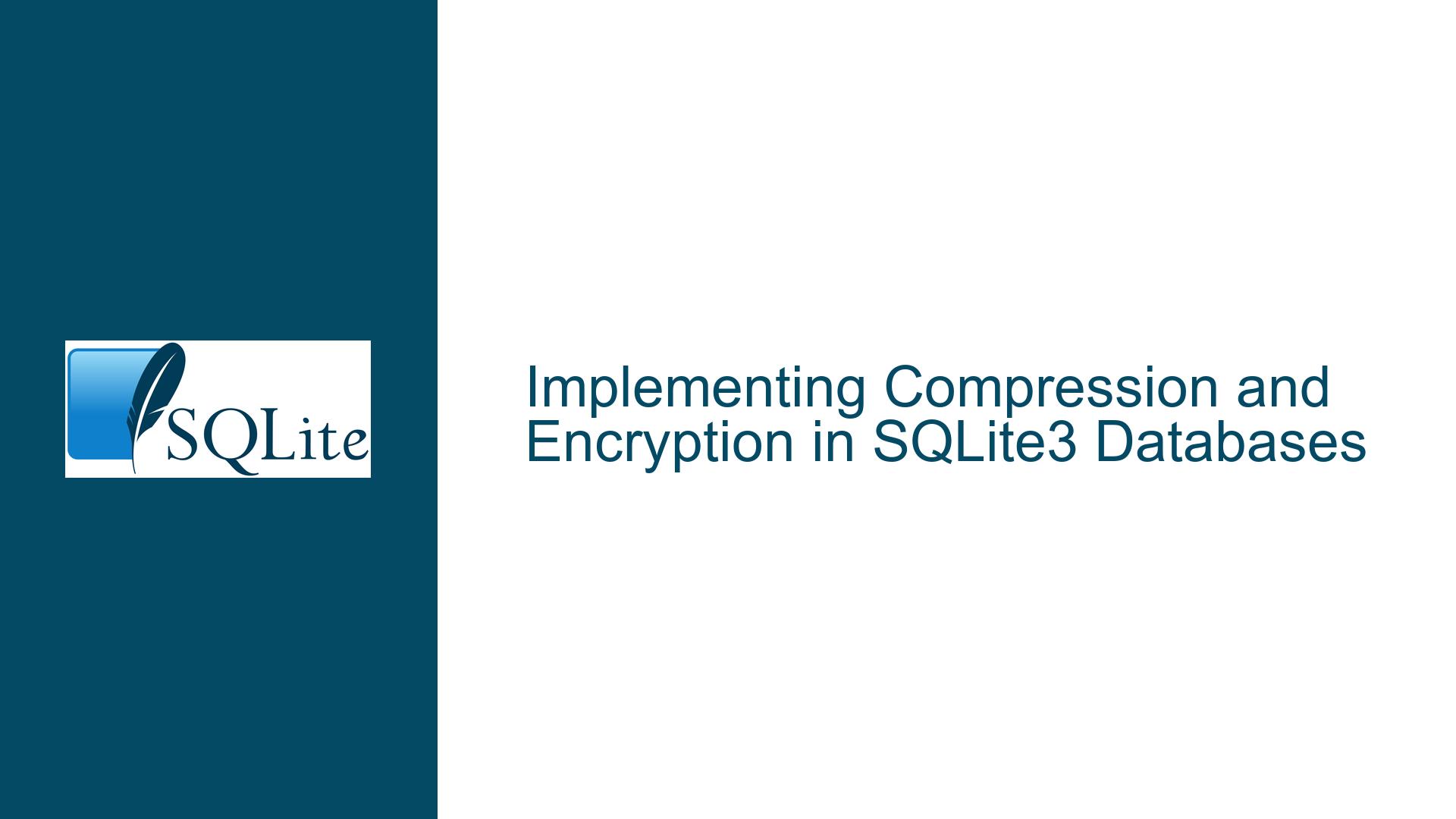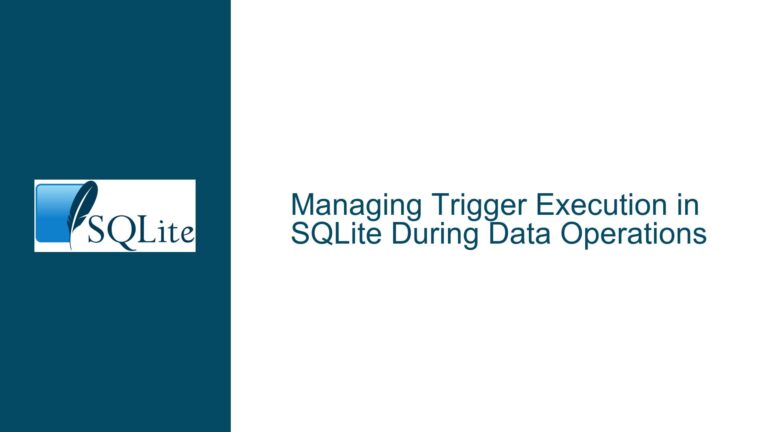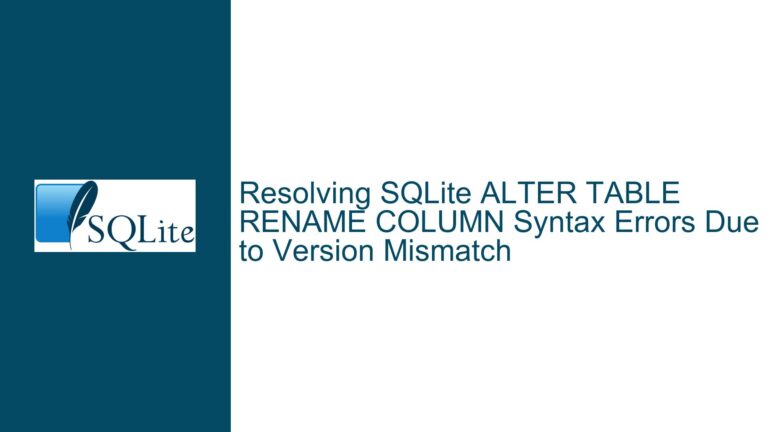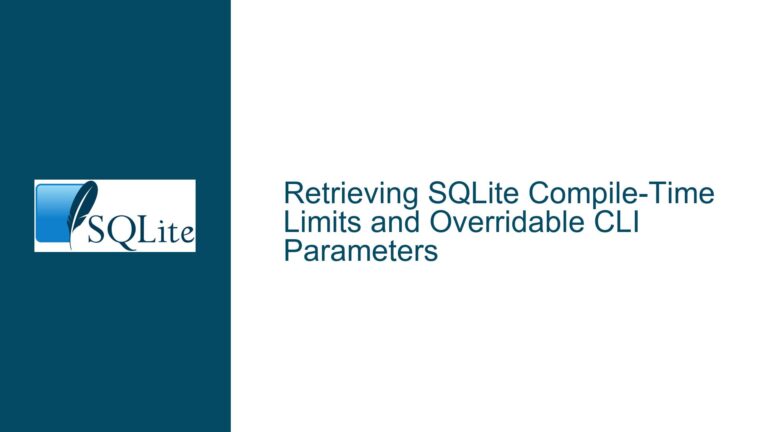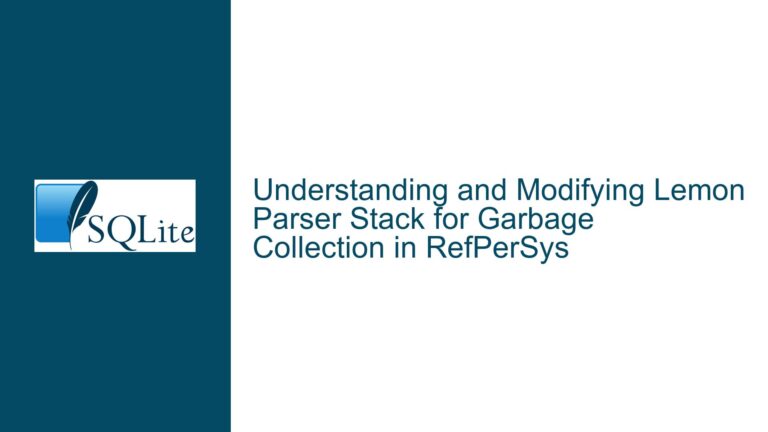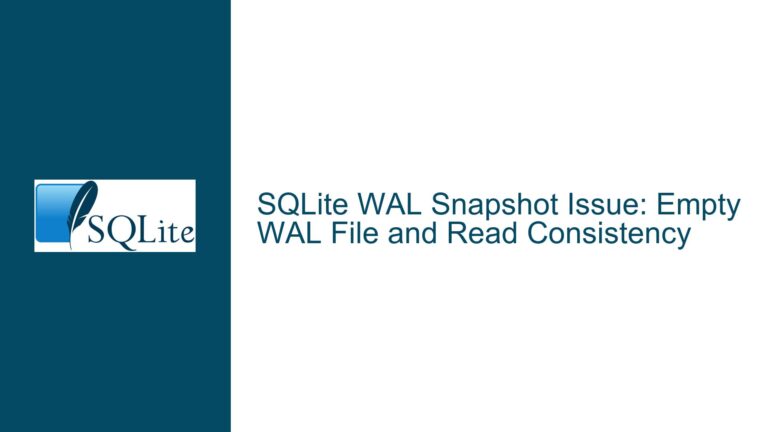Implementing Compression and Encryption in SQLite3 Databases
Understanding SQLite3 Compression and Encryption Requirements
SQLite3 is a lightweight, serverless, and self-contained database engine widely used in applications ranging from mobile apps to embedded systems. While SQLite3 excels in simplicity and portability, it does not natively support compression or encryption out of the box. This limitation often leads developers to seek external solutions or custom implementations to achieve these features. Compression reduces the size of the database file, which is particularly useful for storage optimization and faster data transfers. Encryption, on the other hand, ensures data security by making the database file unreadable without the correct decryption key.
The need for compression and encryption in SQLite3 databases arises in scenarios where sensitive data must be protected, or where storage space is at a premium. For instance, mobile applications handling user credentials or financial data often require encryption to comply with data protection regulations. Similarly, applications running on devices with limited storage, such as IoT devices, benefit from compressed databases to minimize disk usage.
To address these requirements, developers typically rely on third-party libraries, custom extensions, or wrapper tools that integrate compression and encryption functionalities into SQLite3. However, implementing these features requires a deep understanding of SQLite3’s architecture, file format, and the underlying principles of compression and encryption algorithms. Missteps in implementation can lead to performance degradation, data corruption, or security vulnerabilities.
Common Challenges in Implementing Compression and Encryption
One of the primary challenges in implementing compression and encryption in SQLite3 is the lack of native support. SQLite3’s design philosophy emphasizes simplicity and minimalism, which means features like compression and encryption are not included by default. Developers must therefore rely on external tools or libraries, which can introduce compatibility issues, increase complexity, and require additional maintenance.
Another challenge is the trade-off between performance and security. Compression and encryption algorithms are computationally intensive, and their implementation can significantly impact database performance. For example, compressing a database file reduces its size but increases the time required for read and write operations. Similarly, encrypting a database file ensures data security but adds overhead to every database operation. Balancing these trade-offs requires careful consideration of the specific use case and performance requirements.
Data integrity is another critical concern. Improper implementation of compression or encryption can lead to data corruption, making the database file unreadable. For instance, if the compression algorithm is not applied consistently across all database operations, it can result in inconsistencies between the compressed and uncompressed data. Similarly, encryption key management is crucial; losing the encryption key can render the database permanently inaccessible.
Compatibility with existing tools and libraries is also a challenge. SQLite3 is widely used, and many applications rely on its standard file format. Introducing compression or encryption can break compatibility with tools that expect an unencrypted or uncompressed database file. This can complicate debugging, data migration, and integration with third-party services.
Step-by-Step Guide to Implementing Compression and Encryption
To implement compression and encryption in SQLite3, developers can follow a structured approach that addresses the challenges outlined above. The process involves selecting appropriate tools or libraries, integrating them into the application, and ensuring data integrity and performance.
Step 1: Selecting the Right Tools and Libraries
The first step is to choose the tools or libraries that will provide compression and encryption functionalities. Several options are available, each with its own strengths and limitations.
For compression, popular choices include zlib, a widely-used compression library, and SQLite3’s own extension mechanism, which allows developers to add custom compression functions. zlib is known for its efficiency and compatibility, making it a reliable choice for most applications. However, developers should be aware of the performance overhead associated with compression, especially for large databases.
For encryption, SQLCipher is a widely-used extension that provides transparent 256-bit AES encryption for SQLite3 databases. SQLCipher is open-source, well-documented, and actively maintained, making it a popular choice for developers. It integrates seamlessly with SQLite3, requiring minimal changes to the existing codebase. However, developers should ensure that their application can handle the additional performance overhead introduced by encryption.
Step 2: Integrating Compression and Encryption into the Application
Once the appropriate tools or libraries have been selected, the next step is to integrate them into the application. This involves modifying the database initialization code to enable compression and encryption, and ensuring that all database operations are performed on the compressed and encrypted data.
For compression, developers can use zlib to compress the database file before writing it to disk, and decompress it when reading from disk. This requires modifying the application’s file I/O operations to include compression and decompression steps. Alternatively, developers can use SQLite3’s extension mechanism to add custom compression functions that are automatically applied to all database operations.
For encryption, SQLCipher provides a straightforward API for encrypting and decrypting the database file. Developers need to initialize SQLCipher with the encryption key, and ensure that all database operations are performed using the SQLCipher API. This typically involves replacing the standard SQLite3 API calls with their SQLCipher equivalents.
Step 3: Ensuring Data Integrity and Performance
After integrating compression and encryption, it is crucial to ensure data integrity and performance. This involves testing the application to verify that the compressed and encrypted database file is consistent with the original data, and that the performance impact is within acceptable limits.
Data integrity can be verified by comparing the contents of the compressed and encrypted database file with the original database file. This can be done by writing a script that reads and compares the data from both files. Any discrepancies should be investigated and resolved.
Performance testing involves measuring the impact of compression and encryption on database operations. This can be done by running a series of benchmarks that simulate typical database usage, such as inserting, updating, and querying data. The results should be compared with the performance of the uncompressed and unencrypted database to identify any significant performance degradation.
Step 4: Managing Encryption Keys and Security
Encryption key management is a critical aspect of implementing encryption in SQLite3. The encryption key must be securely stored and managed to prevent unauthorized access to the database. This involves implementing secure key storage mechanisms, such as using the operating system’s keychain or a hardware security module (HSM).
Developers should also consider implementing key rotation policies, which involve periodically changing the encryption key to enhance security. This requires re-encrypting the database file with the new key, and ensuring that the old key is securely deleted.
Step 5: Handling Compatibility and Migration
Introducing compression and encryption can break compatibility with existing tools and libraries that expect an uncompressed and unencrypted database file. To address this, developers should ensure that their application can handle both compressed/encrypted and uncompressed/unencrypted database files. This can be done by implementing a migration mechanism that converts existing database files to the new format.
For example, if the application previously used an uncompressed and unencrypted database file, the migration mechanism should compress and encrypt the file when the application is first run with the new version. This ensures that all existing data is securely migrated to the new format.
Step 6: Debugging and Troubleshooting
Debugging and troubleshooting compressed and encrypted SQLite3 databases can be challenging, as the database file is not human-readable. Developers should implement logging and error handling mechanisms to capture and diagnose issues related to compression and encryption.
For example, if the application fails to read the database file, the error logs should indicate whether the issue is related to compression, encryption, or both. This can help developers quickly identify and resolve the issue.
Step 7: Optimizing Performance
To optimize the performance of compressed and encrypted SQLite3 databases, developers should consider several factors, including the choice of compression and encryption algorithms, the size of the database file, and the frequency of database operations.
For compression, developers should choose an algorithm that provides a good balance between compression ratio and performance. For example, zlib offers a good balance, but developers may also consider other algorithms, such as LZ4 or Zstandard, which offer faster compression and decompression speeds at the cost of a slightly lower compression ratio.
For encryption, developers should ensure that the encryption algorithm is efficiently implemented and that the encryption key is securely managed. SQLCipher’s 256-bit AES encryption is generally efficient, but developers should still monitor performance and optimize as needed.
Step 8: Testing and Validation
Finally, developers should thoroughly test and validate the compressed and encrypted SQLite3 database to ensure that it meets the application’s requirements. This involves running a series of tests that simulate typical usage scenarios, including data insertion, updating, querying, and deletion.
Developers should also test the application under various conditions, such as low memory or high CPU usage, to ensure that the compressed and encrypted database performs reliably. Any issues identified during testing should be addressed before deploying the application to production.
Conclusion
Implementing compression and encryption in SQLite3 databases is a complex but achievable task that requires careful planning, integration, and testing. By following the steps outlined in this guide, developers can successfully add these features to their applications, ensuring data security and storage efficiency. However, it is important to be aware of the challenges and trade-offs involved, and to thoroughly test the implementation to ensure data integrity and performance. With the right tools and techniques, developers can leverage the power of SQLite3 while meeting the demands of modern applications.
